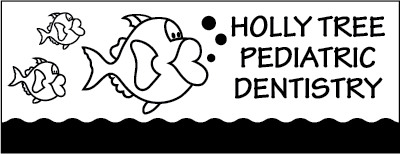-A-
Abscess – infection caused by severe tooth decay, trauma, or gum disease
Amalgam – a silver and mercury material used for fillings
Anesthetic – a drug used by your dentist to eliminate a patient’s localized pain during certain dental procedures
Anterior – the teeth in the front of your mouth
Antiseptic – an agent that can be applied to living tissues to destroy germs
Apex – the very tip of the root of a tooth
Aspirator – a suction device your dentist uses to remove saliva from your mouth
-B-
Bleaching Agent – a gel used to whiten and brighten teeth
Bridge – one or more artificial teeth attached to your adjacent teeth
Bruxism – the clenching or grinding of teeth, most commonly while sleeping
-C-
Calculus – the hardened plaque that can form on neglected or prone teeth, commonly known as tartar
Canine – the pointy teeth just behind the laterals
Caries – another name for cavities or decayed teeth
Cavity – a hole in the tooth caused by decay
Central – the two upper and two lower teeth in the front/center of the mouth
Crown – an artificial tooth or cover made of porcelain or metal
Cuspid – the pointy teeth just behind the laterals, also known as canines
-D-
Decalcification – the loss of calcium from the teeth causing “weak spots” and often white lines on the teeth at the gumline
Deciduous Teeth – also called “baby teeth”
Dental Implants – an implant permanently attached to the jawbone that replaces a missing tooth or teeth
Denture – a removable set of artificial teeth
-E-
Enamel – the hard outer surface of the tooth that is visible to the eye
Endodontist – a dentist who specializes in root canals and the treatment of diseases and infections of the dental pulp (inner tooth)
Extraction – the removal of a tooth or teeth
-F-
Filling – a material made of metal or composite used to fill a tooth cavity
Fluoride – a chemical solution used to harden teeth and prevent decay
-G-
Gingivitis – inflammation and infection of gums around the roots of the teeth
Gums – the firm flesh that surrounds the roots of the teeth
-I-
Impacted Tooth – often occurring with wisdom teeth, a tooth that sits sideways below the gumline, often requiring extraction
Incisal – related to incisors (see below)
Incisor – one of the flat, sharp-edged teeth in the front of the mouth
Inlays – a custom-made filling made of porcelain cemented into a tooth
-L-
Lateral – the teeth adjacent to the centrals
-P-
Pediatric Dentist – a dentist that specializes in the treatment of children’s teeth
Periodontist – a dentist specializing in the treatment of gum disease
Plaque – a sticky buildup of acids and bacteria that causes tooth decay
Posterior Teeth – the teeth in the back of the mouth
Primary Teeth – also known as “baby teeth” or deciduous teeth
Prosthodontist – a dentist specializing in the restoration and replacement of missing teeth or severely damaged teeth
-R-
Root – the portion of the tooth below your gumline
Root Canal – cleaning out and filling the inside nerve of a tooth that is heavily decayed
-S-
Sealant – a plastic coating applied to teeth to prevent decay mostly in children
Secondary Teeth – permanent teeth
Six-Year Molars – commonly known as “first molars”
Sleep Apnea – a potentially serious disorder in which a sleeping person may stop breathing for 10 seconds or more, often continuously throughout the night
-T-
Tartar – (see calculus)
TMJ Syndrome – a disorder associated with the joint of the jaw often caused by a misalignment of or a disparity in upper and lower jaw sizes
Tooth Whitening – a process designed to whiten and brighten teeth
Twelve-Year Molars – commonly known as “second molars”
-V-
Veneer – a plastic, porcelain, or composite material used to improve the attractiveness of a stained or damaged tooth


